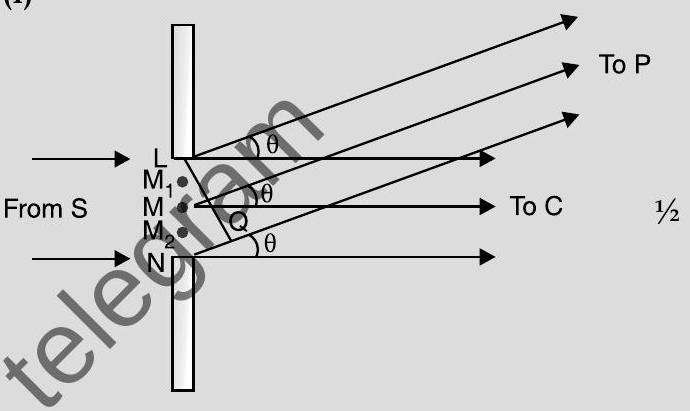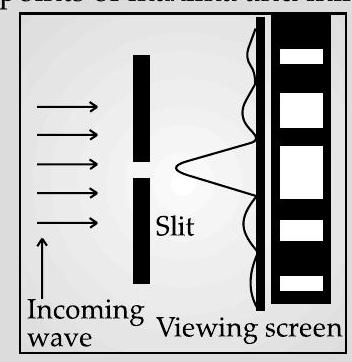Question: Q. 8. When a parallel beam of monochromatic source of light of wavelength
Show that, besides the central maxima at
and the minima at
Why do secondary maxima get weaker in intensity with increasing
A
Show Answer
Solution:
Ans. (i)

The diffraction pattern formed can be understood by adding the contributions from the different wavelets of the incident wavefront, with their proper phase differences.
For the central point, we imagine the slit to be divided into two equal halves. The contribution of corresponding wavelets, in the two halves, are in phase with each other. Hence we get a maxima at the central point. The entire incident wavefront contributes to this maxima.
All other points, for which
We thus get a diffraction pattern on the screen, made up of points of maxima and minima.

Secondary maxima keep on getting weaker in intensity, with increasing
(i) First secondary maxima, the net contribution is only from (effectively)
[CBSE Marking Scheme 2015]






